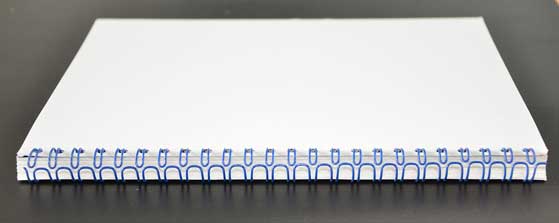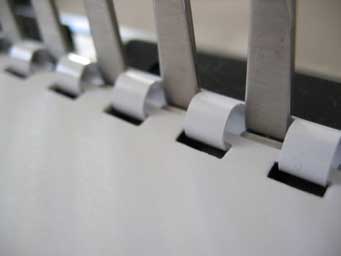Some people have a book, two books or more books in them, waiting to be written. The books might be fiction or non-fiction, children’s books or books for grownups. Sure, many people are using e-readers and tablets for reading these days, but in some ways, e-books still can’t compare to real printed books. For example, it’s possible to read to children from a tablet, but the tactility and vividness of big, bright printed pages wins every time.
On a more commercial note, many businesses can benefit from printed employee handbooks, technical and standards manuals and catalogues. Printed references can easily be passed around the office and everyone will feel comfortable using them. Many businesses find that their customers and clients still prefer printed material. Finally, it’s easy to include a printed book as part of a product package or offer one for sale at a bricks-and-mortar shop or marketplace.
Here are three methods we can use to create a book at Minuteman Printing, whether it’s for a personal project or for business use.
Wire Binding
Wire binding is a practical and inexpensive choice. It’s perfect for references like technical manuals, employee handbooks, cookbooks and really any kind of how-to. With wire binding, small holes are punched along the left margin using a machine. Then, a binding wire is inserted to hold the pages together. The biggest advantage of wire binding is that it allows books to lay flat and open to any page without bending or needing to be held in place. The disadvantages are that it’s possible to tear pages out along the binding line and the wire spine can start to float to the top or the bottom. There is also a limit in how long the books can be. Call and ask to find out if wire binding will work for your project.

Wire Binding at Minuteman Press Spencer Street
Comb Binding
Comb binding is similar to wire binding, but it uses a flexible plastic spine with tongs that are guided through square holes on the book’s left margin. Like wire binding, comb binding can’t be used for very long books. However, pages will generally stay open and lay flat. Comb binding is inexpensive and is commonly used for relatively short books with relatively large pages.

Comb Binding at Minuteman Press Spencer Street
Saddle-Stitched Books
When you picture a traditionally bound book, you’re probably thinking of a saddle-stitched spine. However, in the more modern version of the process we use at Minuteman, each sheet of paper is printed with two pages on the front and two pages on the back. Then, the pages are folded and stapled together in the centre. Ask us about the variations on this method and about the number of pages we can accommodate.
Whether you need to print books or manuals for business, for gifts or to sell, give us a call or e-mail and we can discuss your options in paper size, paper type and binding method. We can also help you with layout and graphics, if needed.








